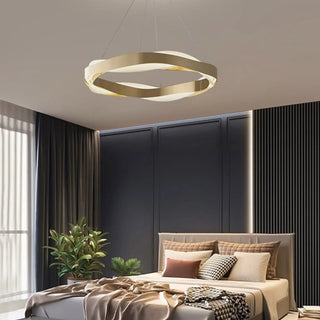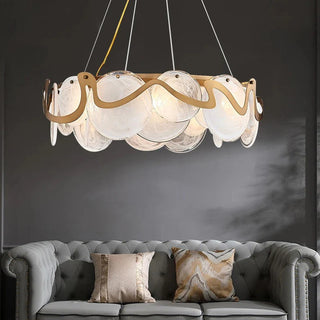In the intricate dance between design elements, chandeliers stand as luminous partners, ready to weave visual harmony within architectural spaces. This exploration delves into the art of uniting chandeliers with the intricate details of a room's architecture, revealing the secrets to creating a space where lighting seamlessly integrates with structural aesthetics.
As we embark on this illuminating journey, envision a space where each arch, molding, or unique structural feature plays a vital role in shaping the room's character. The introduction of a chandelier becomes more than mere illumination; it is a carefully curated addition that enhances the architectural narrative.
Throughout this guide, we will unravel the considerations behind choosing chandeliers that respect the scale, height, and style of architectural elements. From modern fixtures in classical settings to traditional designs in contemporary spaces, we'll discover the delicate balance that transforms a room into a visually cohesive masterpiece.
In the realm of interior design, the synergy between chandeliers and architectural details holds the key to achieving a visually pleasing and cohesive ambiance. Let's embark on a journey through the considerations and strategies involved in selecting chandeliers that complement and elevate the unique features of a space.
Scale and Proportion:
Chandeliers, much like actors on a stage, need to play their part without overshadowing or disappearing into the background. Understanding the scale and proportion of architectural elements is crucial in choosing a chandelier that feels just right. A grand foyer with high ceilings may call for an opulent, large-scale chandelier, while a more intimate space benefits from a fixture that complements its size.Height and Hanging Considerations:
Architectural details often dictate the height at which a chandelier should be hung. We'll delve into the art of finding that sweet spot – where the chandelier becomes an integral part of the visual landscape without obstructing views or overpowering the surrounding elements. Whether it's a vaulted ceiling, a coffered design, or an intricate molding, the chandelier should gracefully interact with the architectural ensemble.Style Synchronization:
Harmonizing chandelier styles with architectural elements is akin to orchestrating a symphony of visual delight. From traditional crystal chandeliers in rooms adorned with classical moldings to sleek, modern designs seamlessly blending with minimalist architecture, we'll explore how to marry various styles for a cohesive and balanced appearance. The goal is to enhance, not compete, with the architectural narrative.Illuminating Architectural Focal Points:
Architectural details often serve as focal points in a room, and chandeliers can accentuate these features with strategic illumination. Whether it's casting a spotlight on a grand fireplace, highlighting ornate columns, or accentuating a distinctive ceiling design, we'll uncover techniques to use chandeliers as dynamic tools for showcasing architectural marvels.
As we navigate through these considerations, envision the transformative power of chandeliers that embrace, enhance, and gracefully integrate with the architectural soul of a space. Join us in discovering how thoughtful chandelier choices can turn architectural elements into visual poetry, creating a symphony of light and form that resonates throughout the room.









